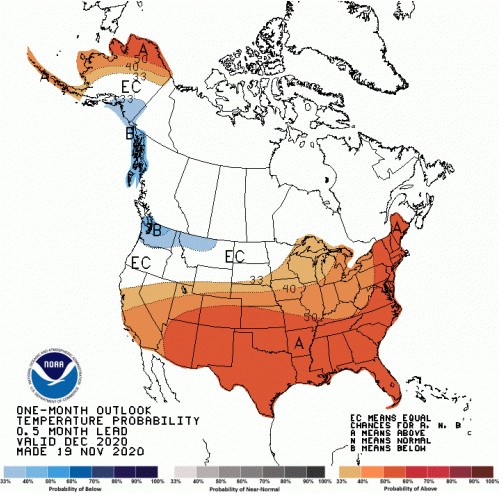By Dennis Todey and Justin Glisan
Unlike many recent years, fall has been very dry and soils continue to be dry over much of western Iowa. The conditions have been excellent for harvest and fall fieldwork but troubling for soil moisture recharge.Soils in eastern Iowa are generally better, though not wet.
This situation seems likely to continue into next year. Though temperatures have been warm and kept soils from freezing, rains have not occurred to recharge moisture. Current outlooks and climatology are working against us at this point. Typically, precipitation is more limited in the winter, and current outlooks don’t indicate any expected wet periods. The initial December outlooks continue to show elevated probabilities of warmer than average temperatures, though no clear signal on the precipitation side. With EC or “Equal Chances”, there is a slightly higher chance (34%) of near climatological behavior, the remaining balance split between above and below-normal conditions. The configuration seen in these outlooks do show a strong resemblance to the classic La Niña signature over the continental United States.

The winter outlooks just released by the National Weather Service Climate Prediction Center are heavily influenced by the current La Niña (referring to sea surface temperatures in the Pacific). The current La Niña is fairly strong and expected to last into early spring, likely influencing winter and possibly spring planting. Looking at the outlooks for meteorological winter (December-January-February), Iowa straddles a couple boundaries during La Niña events. Temperatures warmer than average are more likely to our south while slightly better chances at colder than average exist to our north. A more active precipitation pattern is possible again to our north and east, while drier conditions are more likely in the plains and to our south.